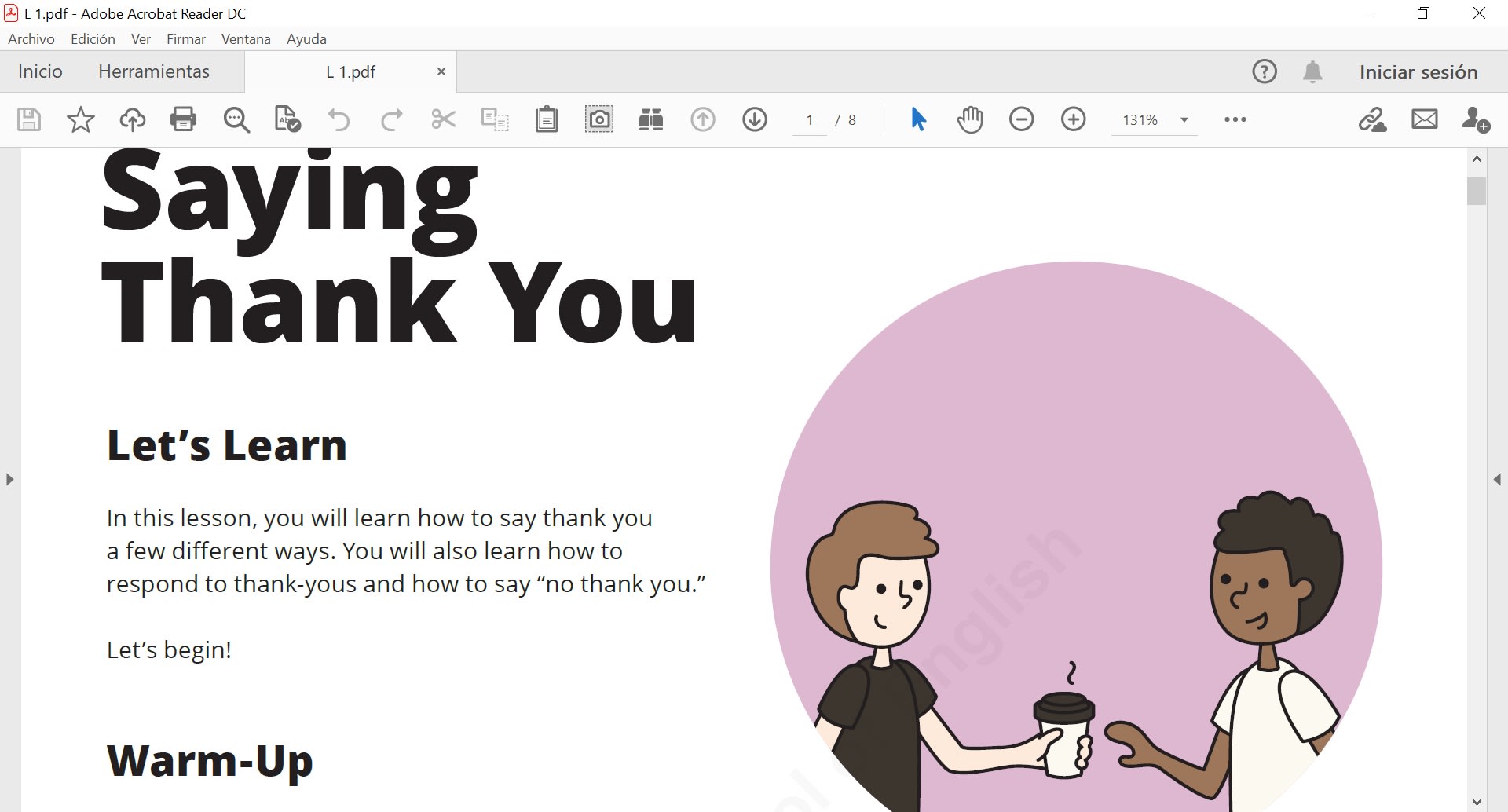
고마워요 (gomawoyo) is still polite, but it’s conjugated differently so it’s a bit less formal. Therefore, this version of “thank you” in Korean is the same as 고맙습니다 (gomapseumnida). This phrase 고맙습니다 (gomapseumnida) comes from 고맙다 (gomapda) which means “to give thanks”. If you are close to somebody, and they’re close in age to you, then you can say 고마워요 (gomawoyo) to express your thanks to them using standard language.
#No thank you english download how to#
How to Say “Thank You” in Korean Standard 메시지 보내주셔서 고맙습니다 (mesiji bonaejusyeoseo gomapseumnida) (geureoke malsseumhae jusini gomapseumnida) It’s still polite and the meaning would be the same. You can use 감사합니다 (gamsahamnida) in place of 고맙습니다 (gomapseumnida). This expression comes from the Korean descriptive verb 고맙다 (gomapda) meaning “to be thankful or grateful.”īelow are some example sentences using “thank you” in Korean. But they are actually saying 감사합니다 (gam sa ham ni da). It is usually said quite quickly, so t he pronunciation might sometimes sound to you like 감삼니다 (gam sam ni da). You can use this phrase to express “thank you” in Korean in a restaurant, convenience store, or taxi. Put them together, and you get 감사합니다 (gamsahamnida | to do thanks). The word 감사 (gamsa) is a noun that means “gratitude” or “appreciation” in the Korean language. 염려해 주셔서 감사합니다 (yeomnyeohae jusyeoseo gam sa ham ni da) (sigan naejusyeoseo daedanhi gam sa ham ni da) You can use this thanks for everyday life in Korea.

It uses formal and polite language, so can be used with strangers and people older than you. 감사합니다 (gam sa ham nida) is one of the most common ways of saying “thank you” in Korean. It comes from the Korean verb 감사하다 (gamsahada) which means “to thank.” This is the formal language version of “thank you”. Most of the time, you will only need to use one of the two ways of saying thank you in Korean below. However, for “thank you” in Korean, it’s best to learn the formal language version first! For Korean phrases in general, we recommend using the standard “thanks” form since it’s the most versatile. We’re going to break it down into 3 simple forms for you. These levels are reflected in Korean culture. There are several levels of formality in the Korean language. This video shows the most common ways of saying thank you. You will also understand which phrases can be used with friends and which words should be used with someone you don’t know well.Īre we ready to get started on how to say “thank you” in Korean? Let’s get to it! You will start to notice when each version of thanks should be used. Once you understand the subtleties of these phrases, listen for “thank you’s” in your day-to-day Korean conversations.

1 How to Say “Thank You” in Korean Formal.
#No thank you english download pdf#
We also have a free “Thank you in Korean” PDF guide so you can take the phrases with you on the go. Not to worry, if you follow the Korean etiquette rules, you are sure not to offend anybody.īelow, we will learn all of the various ways to say “thank you” in Korean, and the people they should be used with. Their way of speaking can vary from formal to casual language. Koreans have different ways of speaking with each other depending on the age or position someone holds. This is why there are different ways of saying thank you and other Korean phrases. The key is learning which of the phrases should be used with which people! Korean culture gives importance to hierarchy and respect which is evident in their gestures and their language. When people first start to learn Korean, they are often surprised that there are more ways to say “thank you” than there are in English.

It is one of the most important things to know when learning to speak the language. In this lesson, we’ll show you how to say “thank you” in Korean.


 0 kommentar(er)
0 kommentar(er)
